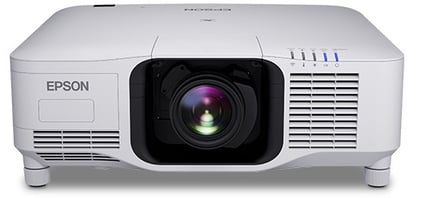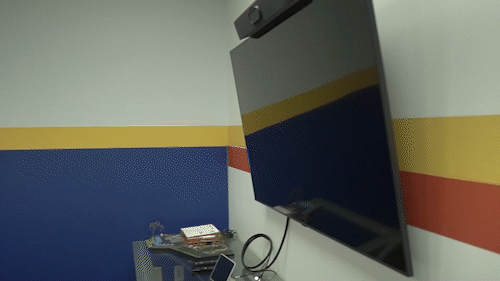When it comes to displaying content in a commercial environment, two notable options are projectors and displays. Both have their pros and cons, and the decision on which to use ultimately depends on the specific needs and requirements of the setting. Here, we will discuss the technical differences between projectors and displays, and when each is best suited for commercial environments.
Projectors
Projectors work by projecting an image onto a surface, usually a separately installed projector screen or a blank wall. Most often, projectors are used in large spaces and can project images onto a screen that is much larger than most displays.
Projectors also vary in terms of brightness, image quality, and resolution. Representation of color is also an important factor to consider when evaluating projectors; some projectors have better ability to reproduce a full range of colors than others. Additionally, many projectors have features such as HDMI input, Wi-Fi connectivity, and 3D support, allowing you to modify content with no extra installs.
However, projectors do require a darker room to display content effectively, as ambient light can diffuse the image. They also require regular maintenance, including bulb replacement and calibration, which can be time-consuming and costly. And while some projectors are designed with portability in mind, the majority of projectors remain large bulky devices that stay rigged to and require lenses to focus images that can be adjusted manually.

Displays
Displays, on the other hand, are flat-panel screens that emit light to display images. They are available in a range of sizes and resolutions (such as 16:9, 21:9, 4:3, 1:1), and can be mounted on walls or placed on stands. More than often, displays are used in applications such as digital signage (which you can read more about here), but they can also be used in interactive solutions as well.
Unlike projectors though, displays are not affected by ambient light and can be viewed in well-lit rooms. Additionally, they require less maintenance than projectors, have a longer lifespan, and can stay on for 24 hours a day with no risk of overheating.
However, displays have their limitations. A display can only get so large before they start becoming notably expensive, and in situations where you need a large amount of video coverage, joining displays together might either be too expensive, unattainable, or unfashionable.

So Which Should I Get?
When deciding between a projector and a display in a commercial environment, there are several factors to consider.
For example, if the space is large and the audience is spread out, a projector may be the better choice as it can display larger images. However, this will only be effective if you can completely control the lighting in the room - if the room has lots of natural light, a display may be preferable as it will be easier to see. The budget is also a key consideration, as displays are generally more expensive than projectors.
But at the end of the day, leave it up to an A/V integrator to let you know what's perfect for you! If you need any sort of projector, digital signage, or display solutions, let us know what your concerns and we'll get back to you ASAP!


